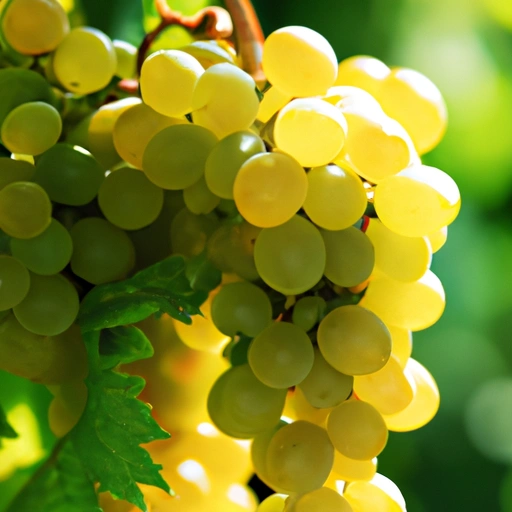Chardonnay
Description

Chardonnay is a green-skinned grape variety used to produce white wine. It originated from the Burgundy wine region of eastern France but is now grown wherever wine is produced, from England to New Zealand. As an ingredient in food recipes, Chardonnay can add a nuanced flavor, often bringing a touch of elegance to sauces, seafood dishes, and more. Its taste can vary widely depending on climate and production methods but typically showcases notes of apple, pear, citrus, and hints of vanilla when oak-aged.
Common uses
Chardonnay is commonly used as a drinking wine, served with meals, or incorporated into recipes as a flavor enhancer. It is also a popular choice for creating wine-based sauces, marinades, and dressings.
Nutritional value
Calories
A typical serving of Chardonnay (5 oz / 147 ml) contains approximately 120 to 130 calories.
Protein
Chardonnay contains negligible amounts of protein.
Fat
This wine is essentially fat-free, containing no significant amounts of fat.
Carbohydrates
Chardonnay includes roughly 3 to 4 grams of carbohydrates per serving, mainly from sugars present in the wine.
Vitamins
While not a significant source of vitamins, Chardonnay may contain small amounts of certain B vitamins.
Minerals
Minerals in Chardonnay are present in trace amounts, including potassium and magnesium.
Health benefits
Moderate consumption of Chardonnay, as part of a balanced diet, may contribute to heart health due to its antioxidant properties. It may also provide stress relief and contribute to a reduced risk of certain chronic diseases when consumed responsibly.
Potential risks
Overconsumption of Chardonnay, like any alcoholic beverage, poses health risks including liver disease, addiction, and increased risk of certain cancers. It should be enjoyed in moderation, especially by individuals with health conditions affected by alcohol.
Common recipes
Chardonnay is frequently used in recipes such as coq au vin blanc, risotto, seafood bisque, and various sauces for fish and poultry.
Cooking methods
It can be incorporated into recipes through methods such as deglazing, poaching, braising, and reducing to concentrate its flavor.
Pairing with other ingredients
Chardonnay pairs beautifully with dishes like grilled chicken, creamy pastas, seafood, and dishes with a buttery or creamy texture. It also complements goat cheese, Gruyère, and Brie.
Summary
Chardonnay is a versatile wine that is not only enjoyed as a beverage but also used as a gourmet ingredient in various dishes. With its range of flavors and ability to enhance food pairings, Chardonnay remains a favorite among chefs and food lovers alike. However, its consumption should be balanced with an awareness of its caloric content and potential health risks when consumed in excess.